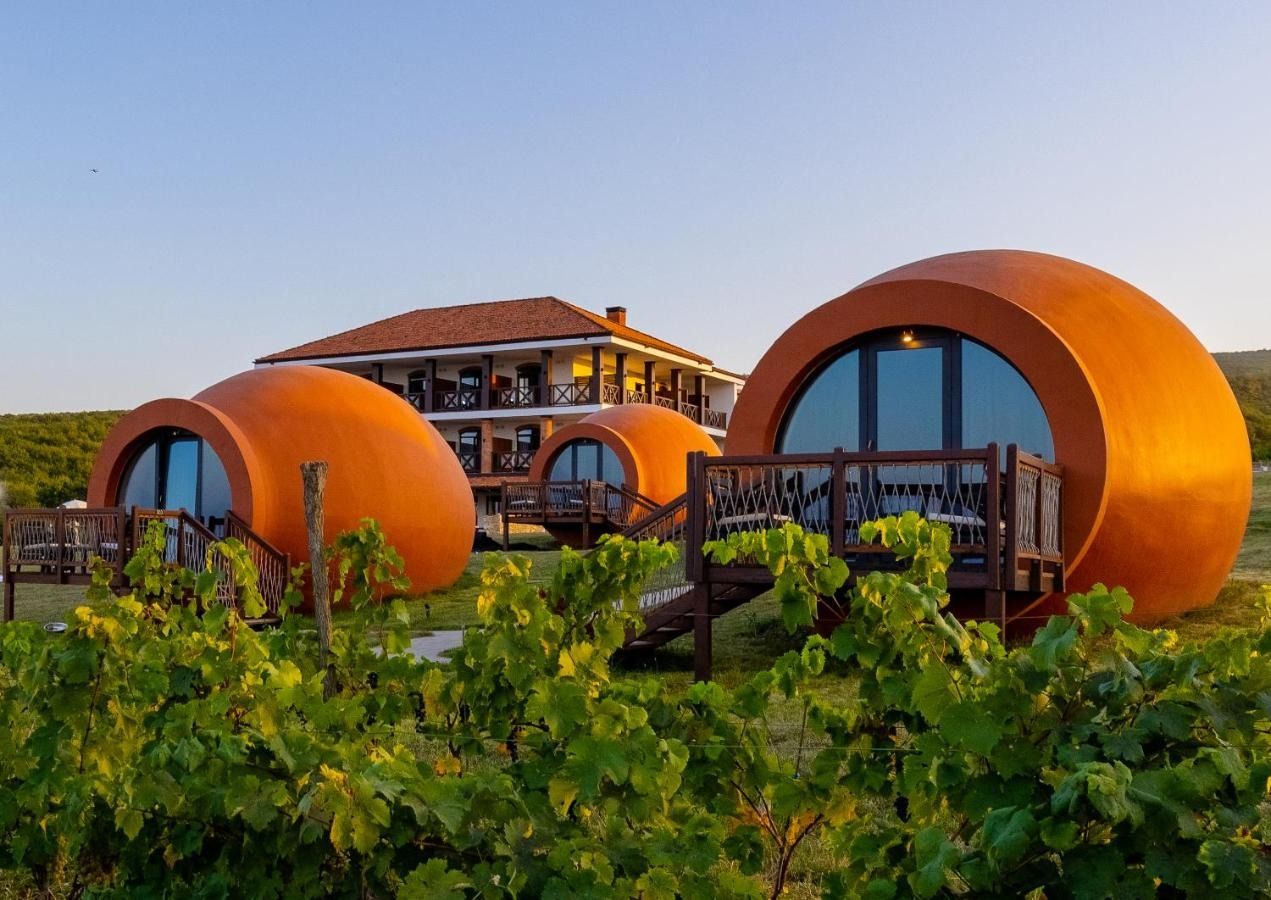Georgia, in the Caucasus of western Europe, is known for having some of the highest mountains on the continent. It's also known for being the 'birthplace of wine', with UNESCO-designated viticulture tradition stretching back around 8,000 years—making it the oldest wine-producing country in the world. Nowhere is this tradition more important than the eastern region of Kakheti, Georgia’s ‘wine country’.
“It's quite a diverse region because we have the Caucasus Mountains in the north, and semi-desert regions in the south,” explains Mariam Manchkhashvili, a tour guide from Kakheti. “In the middle of the region is the Alazani Valley, which is a very flat area where we cultivate most of our wines, so there’s lots of vineyards there. The climate is quite dry and it gets hot in summer, 35 degrees Celsius or higher. This is perfect for the wine.”
There are numerous wines produced in the region, but some of the most well known are Rkatsiteli and Mtsvane—both white wines—and a red wine, Saperavi.
“Sometimes we call it a black wine, because it has a deep purple, almost black colour,” Mariam says. “We have different microclimate zones, and my favourite wine is the Saperavi from the Mukuzani microzone. It's full-bodied, with a lot of tannins in the wine. It can be a bit heavy, but it has so many different flavours.”
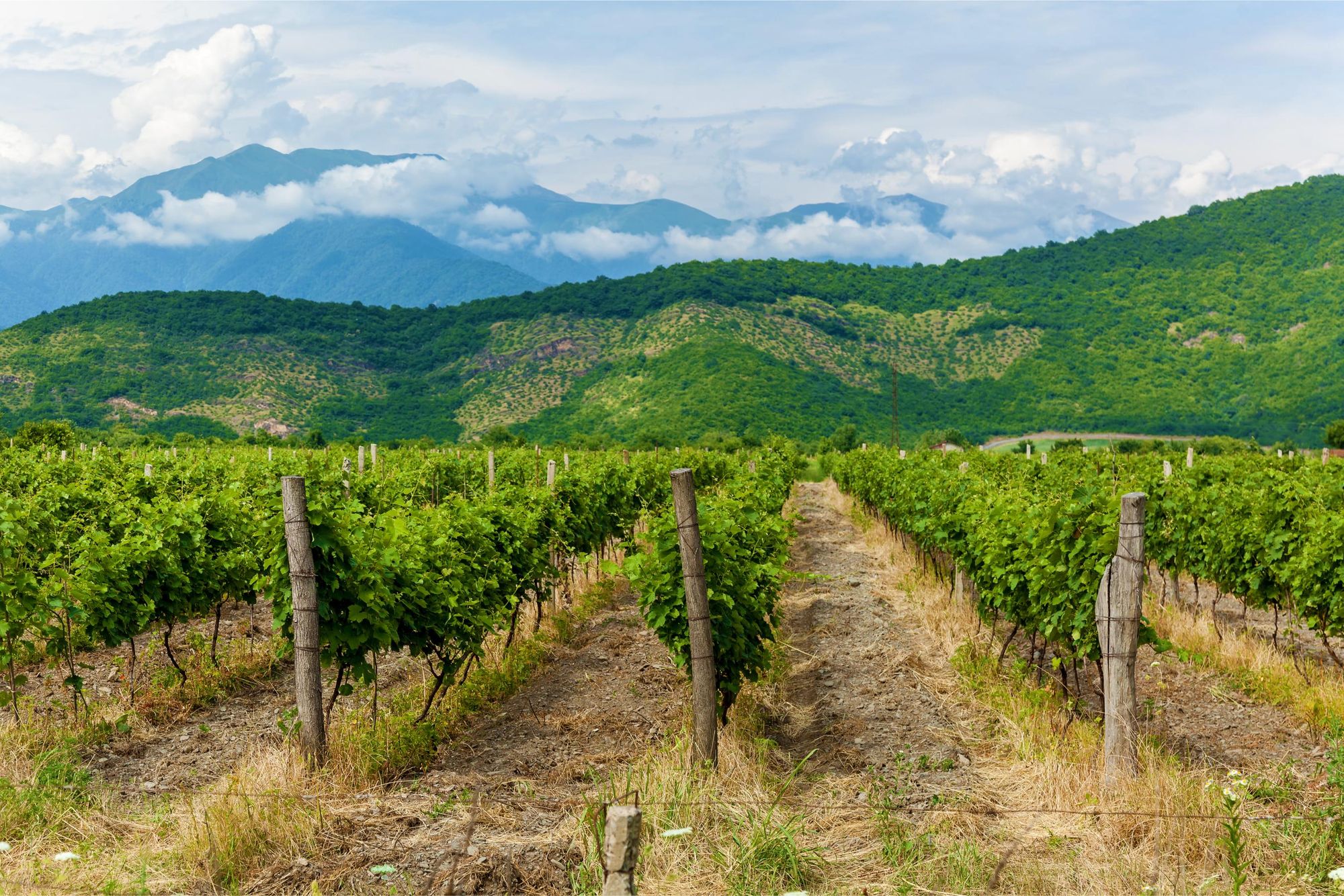
If you visit the region of Kakheti, you’ll see first hand how the culture is centred around the wine the region produces, which forms a vital part of local identity.
“One very important part of the Kakhetian culture is the toast-making, which is connected to the wine. The toasts that we make in Kakheti are not just ‘chin chin, let's drink’. No it's about poetry, it's about legends, your life experience—they can be 10, sometimes 15, minutes long,” Mariam says.
The toasts that we make in Kakheti are not just ‘chin chin, let's drink’. No it's about poetry, it's about legends, your life experience
On our Ultimate Adventure in Georgia you'll explore the region of Kakheti, hiking to the scenic hilltop town of Sighnaghi—where you'll have spectacular views of the Caucasus—and e-biking through the vineyards and orchards of the Alazani Valley. You'll really immerse yourself in Kakheti’s wine culture with a stay at Hotel Qvevrebi, on the outskirts of Shalauri village. The hotel has unique rooms shaped like giant qvevri (also written as kvevri), the large egg-shaped clay vessels which are used for fermenting and storing wine in Georgia.
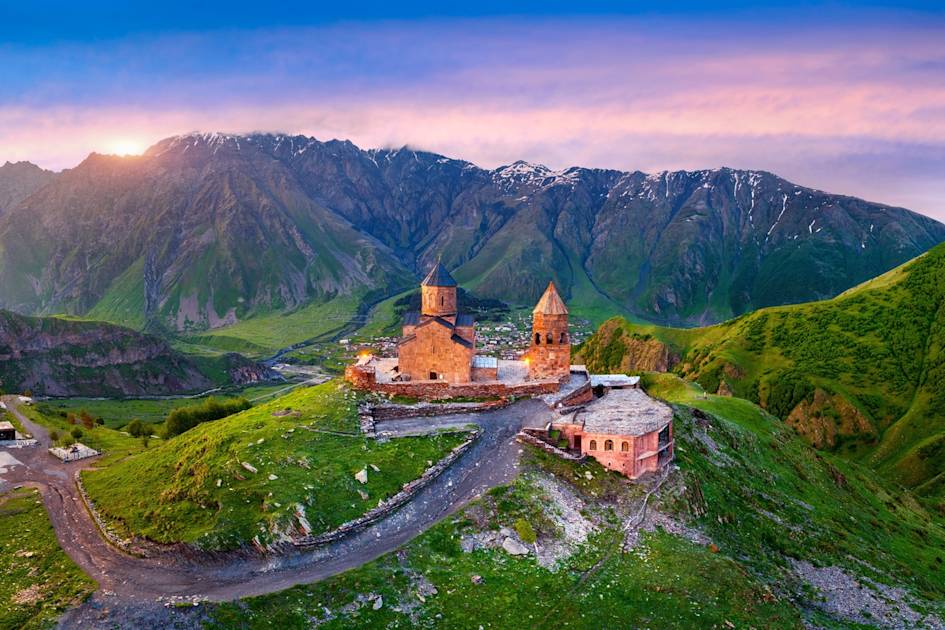
The qvevri rooms are shaped like the vessels lying on their sides. The rounded mouth is inset with a glass window, giving you a view of the family’s vineyard and the misty silhouettes of the hills beyond. The unique shape of the rooms is designed to help promote Kakheti’s 8,000-year-old culture of winemaking, which the qvevri is a fundamental part of.
An 8,000-Year-Old Tradition
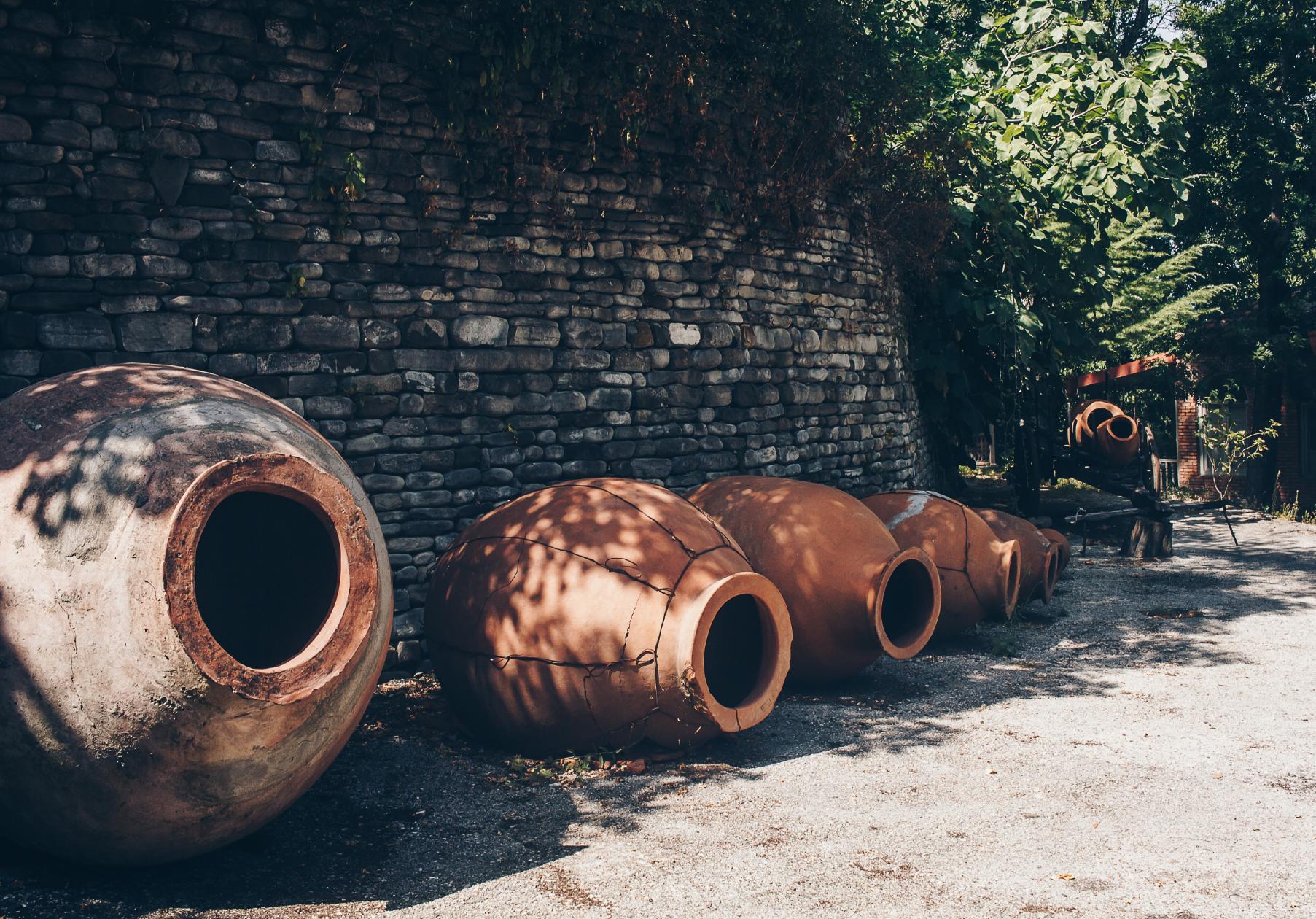
In 2017, earthenware qvevri containing traces of wine residue were found in a neolithic village near Georgia's Tbilisi. Scientists dated them back to around 5,890BC, making this the oldest evidence of winemaking in the world.
The art of qvevri-making has been passed down through the generations. These days, they are made by specialist artisans in the villages of Shrosha, in the Imereti region, and Vardisubani, in Kakheti. It’s a painstaking process that can take months, thanks to the size of the qvevri—some can hold up to 10,000 litres of wine.
“First of all you need to get a good quality clay. The masters know where it is,” says Mariam. “They usually make qvevris from spring until autumn because they need the weather to be dry. They mix the clay with water to make a paste. They do not use any tools to measure it, they just do it by eye, because it’s part of a very long tradition.
“They start with the base which is narrow, and slightly rounded. They build up to 10 centimetres and let it dry for several days and they add 10 centimetres more. It takes around 3 months to have a finished product.
The qvevri is not just a vessel. It’s really important to the culture
“Then you fire the qvevris in massive ovens with a brick wall in front of them. The brick wall should be removable. You need to let the fire burn for about two weeks at more than 1,200 degrees Celsius. Someone has to be awake day and night to control the fire. After around two weeks they slowly reduce the heat. Then they slowly take down the brick wall; you cannot remove it all at once because the difference in temperature might crack the qvevri.”
Once fired, qvevri are buried underground so only their lips are showing, to help keep them cool—the wine cellar is built around them. Every year, they need to be cleaned out before being filled up with the new season’s wine. Natural antiseptics such as wild cherry tree bark, lime water and a yellow-flowered plant named St John’s Wort are used for this.
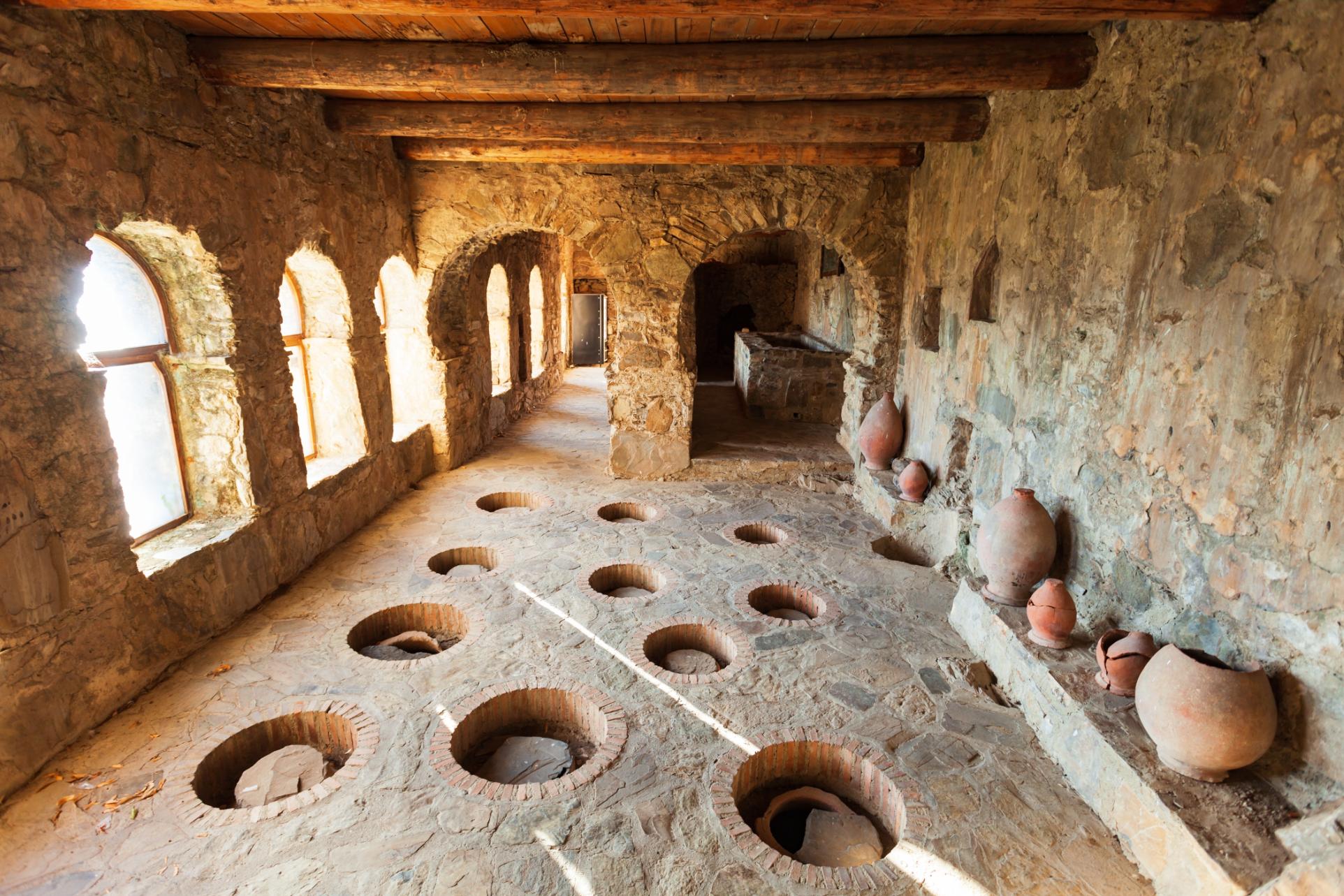
“If the qvevri is big enough, people have to get down inside it and clean it from the inside,” Mariam says. “There's still a lot of acid in there, so it can be quite dangerous. One person stands above, and one person goes into the qvevri and begins to sing while they clean. The singing indicates that the person who's cleaning is fine—once they stop you need to go down there and help them.”

The harvest of the grapes takes place in September or October, and is known in Georgia as Rtveli. The grapes are crushed (formerly by stepping on them but now often with machines) and are then tipped into the qvevri, skins, pips and all. This differs from European winemaking, where only the juice is used.
“In terms of the fermentation, the first two weeks are the hardest because all this residue comes up to the opening, which you have to punch it down several times a day,” Mariam says.
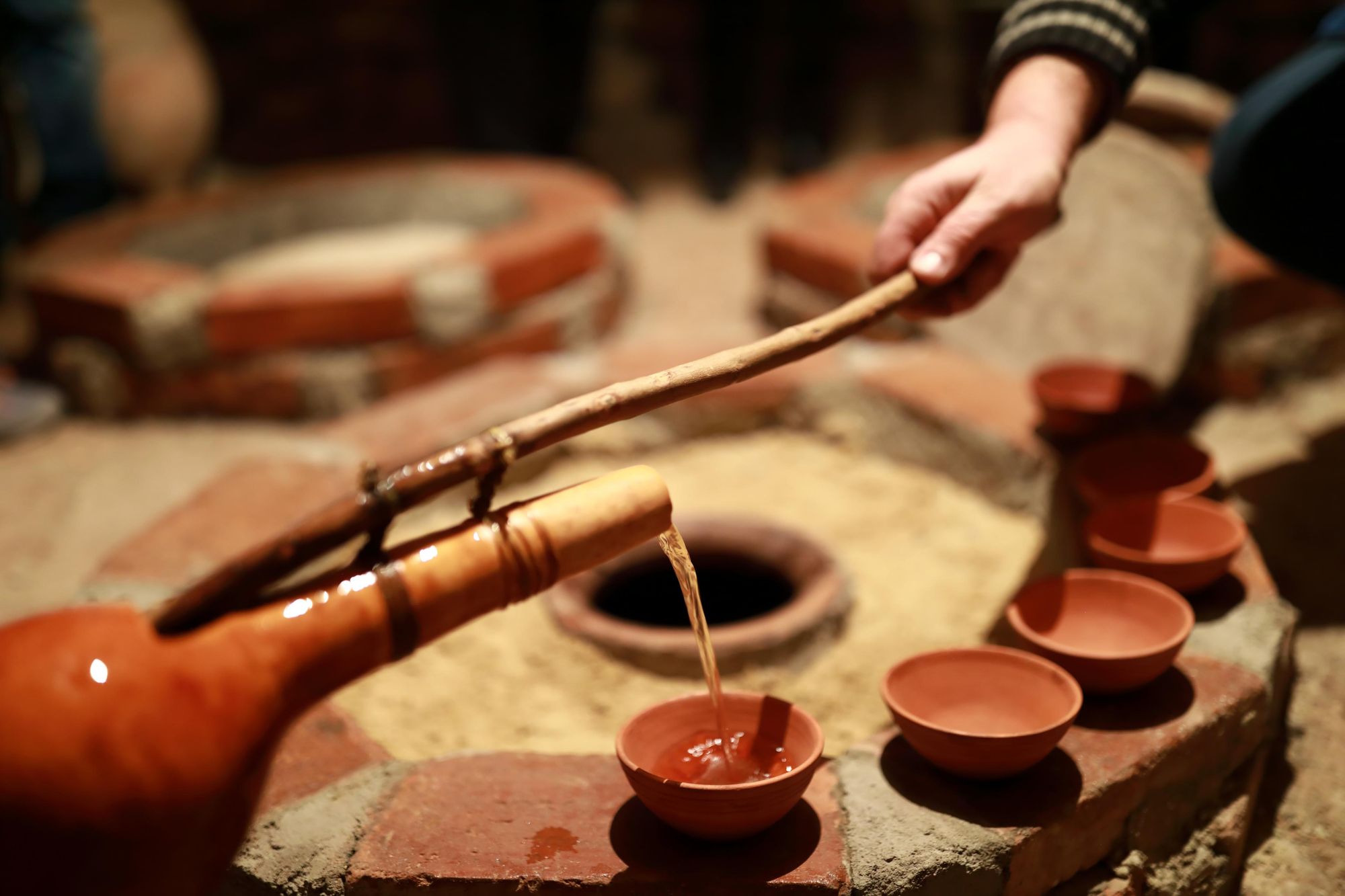
“After this period, which we call ‘boiling’, filtration begins. The shape of the qvevri helps —since the bottom is narrow, the sediment, skins and seeds sink to the bottom part of the clay vessel. We call it natural filtration. The length of time for fermentation really depends on the wine maker; some people let it sit with the rest of the grapes for 3 months, others for 6 months.”
Although there's new technology, everyone still has the traditional tools on display
The wine is removed from the qvevri and then aged in oak barrels or in another qvevri, which is hermetically sealed with clay. This removal used to be done with traditional tools, including a scoop called an orshimo, but now it’s more common for pumps to be used.
“Although there's new technology, everyone still has the traditional tools on display. They don't use them as much, but it's still nice to see how proud people are of them,’ Mariam says.
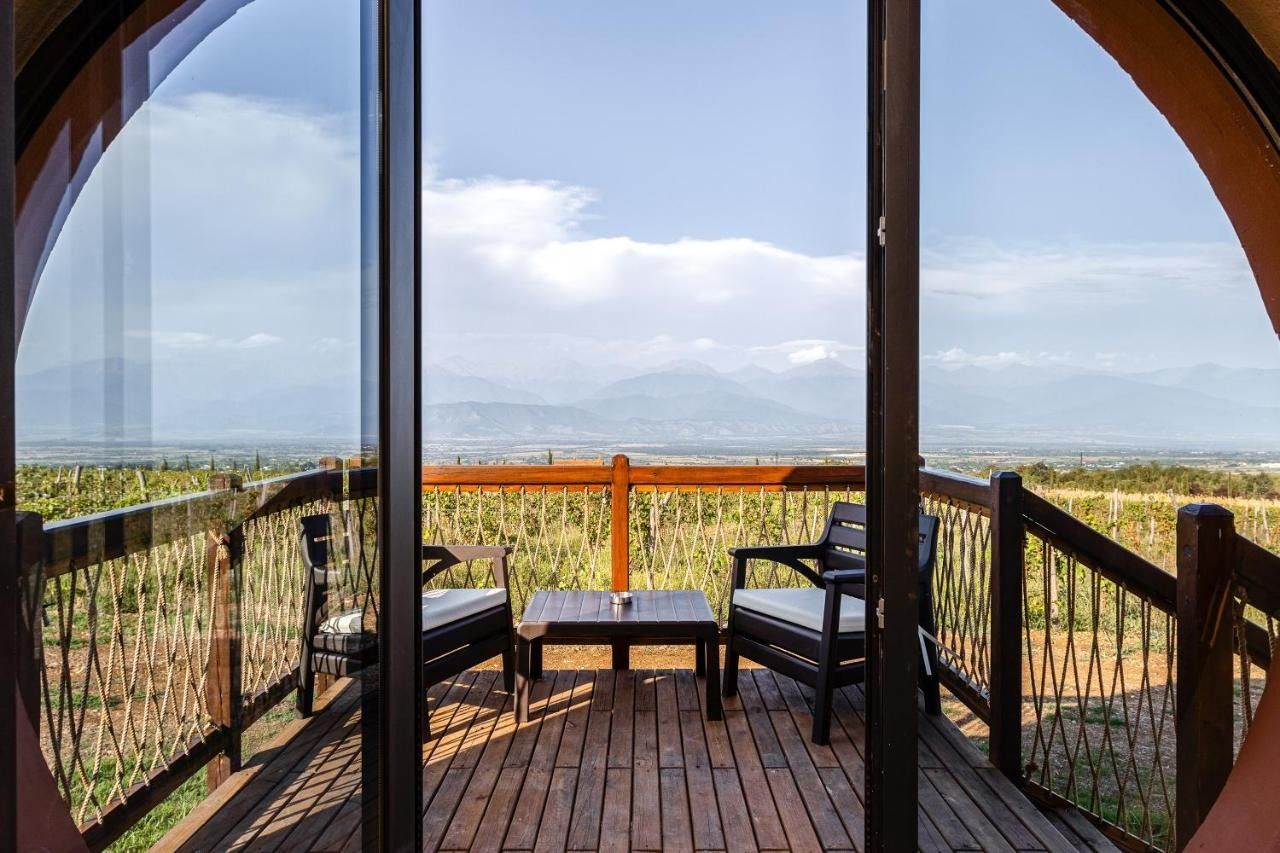
It’s the qvevri that occupies real pride of place, often becoming a cherished family heirloom. Mariam’s family cherish their qvevri, which her grandfather was given by his father—she estimates it’s been in use for around a century.
But a few years ago, the heritage craft of qvevri-making was in danger of dying out. This was due to a lack of demand for qvevri, which occurred in part due to Soviet rule, when wine production was homogenised. Since this ended, however, there has been a revival and resurgence of traditional techniques, as winemakers return to their roots.
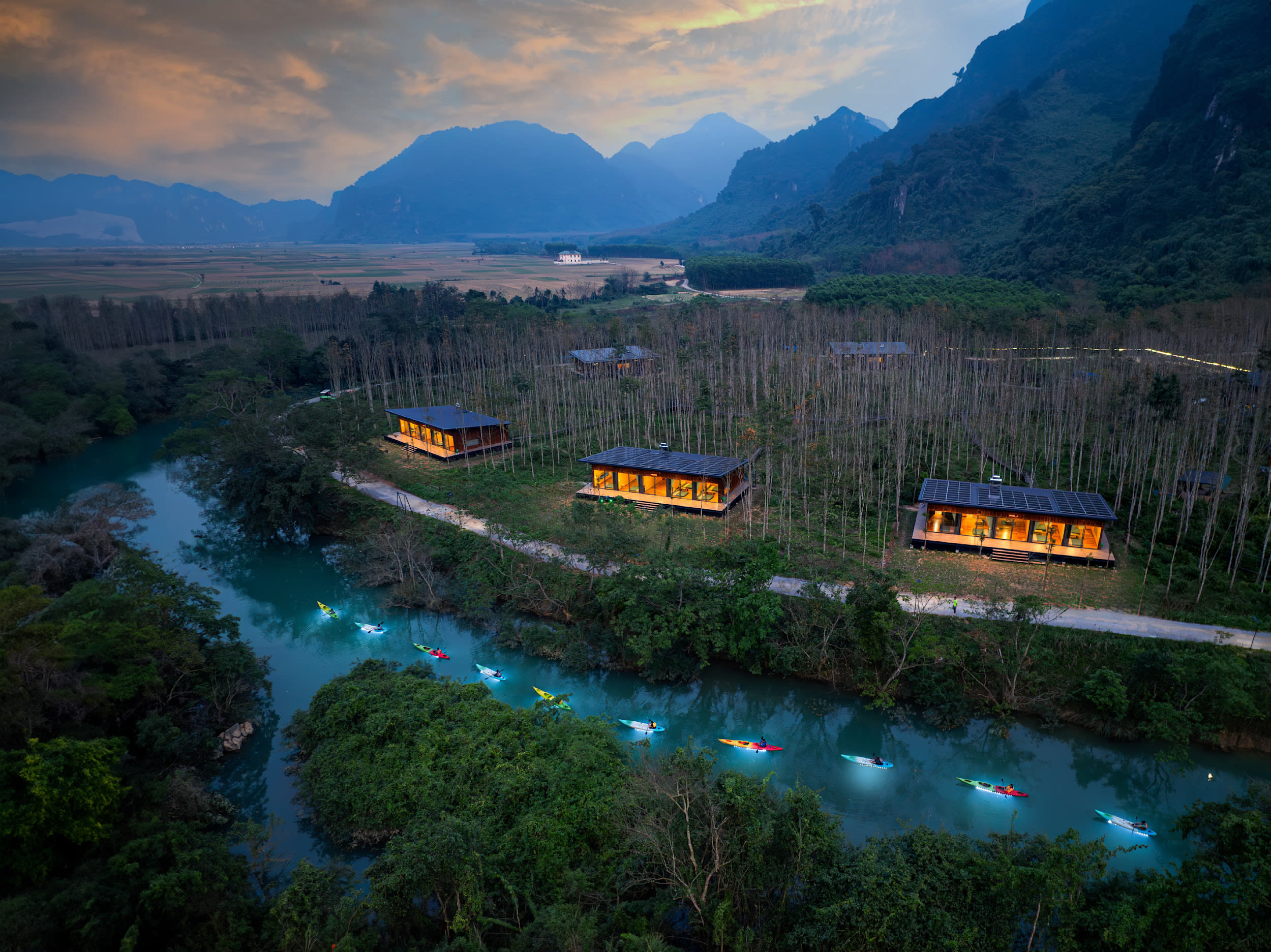
“From the Soviet times and in the '90s when the country was struggling, everyone was focusing on the quantity but not the quality of wines,” Mariam says. “I'm very happy to see that has changed in the past decade, that a lot of people are trying to have the best quality wine.
“It’s important to get the word out. That’s why the Hotel Qvevrebi is so important. It draws attention to traditional Georgian winemaking. The qvevri is not just a vessel. It’s really important to the culture.”
Inspired? Stay in a qvevri-shaped room on our Ultimate Adventure through Georgia, or check out our other Premium Adventures.


